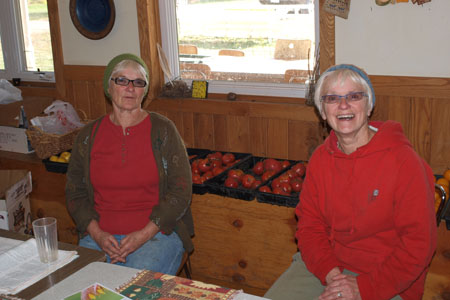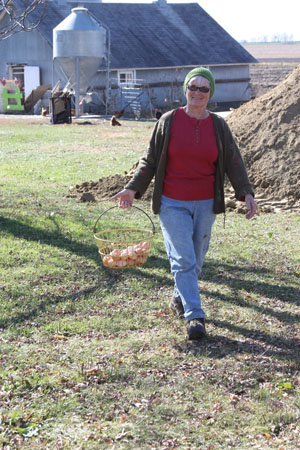Kay and Annette Fernholz
Organic Farmers, Earthrise Farm
Smack in the middle of corn and soybean country sits corn and soybean country sits Earthrise Farm, a dream fulfilled for Sisters Kay and Annette Fernholz. These two sisters grew up on this farm with their parents and seven siblings enjoying a life of what we now call organic and locally-grown farming. They established the farm in 1996 when the two sisters came home to take care of their parents after a life in the service of the School Sisters of Notre Dame (SSND). On 12 acres they have developed a community-supported garden, educational center and spiritual retreat.
In 1944, Kay and Annette’s parents Armond and Gertie purchased this farm and today the 240 acres are all farmed organically by their children and grandchildren including son Carmen Fernholz. Kay and Annette left farm as teenagers to attend school at the Mankato campus of the SSND and returned 40 years later to establish Earthrise Farm. According to Kay and Annette, the inspiration, hard work, and generous spirit of our community surfaces time and again to meet the growing needs of their farm and their mission of renewing connections to the Earth.
On Earthrise Farm you will find Kay and Annette living a life of sustainable farming, community involvement and telling a story of responsibility to the natural environment around us. The Fernholz Sisters take serious their commitment to providing a place for people of all ages to learn how they can make a difference protecting our resources. Visitors discover a place where a 1917 Country School serves as a public gathering spot, a poultry coop raises organic eggs for market, and in the Rachel Carlson House (a former chicken barn) is a warm and cozy place to enjoy the bounties of the farm.
“When we first came back to the farm sixteen years ago we were kind of amazed how people didn’t know much about community supported agriculture because we are out here and there is all this land. It didn’t take us long to realize that it was just corn and soybeans, pretty much. We became more familiar with what we call the food desert. That would be a whole different transformation of the landscape in our area if we could eat off our fields. I think that is the through process that is evolving again because the thought it out there.”




